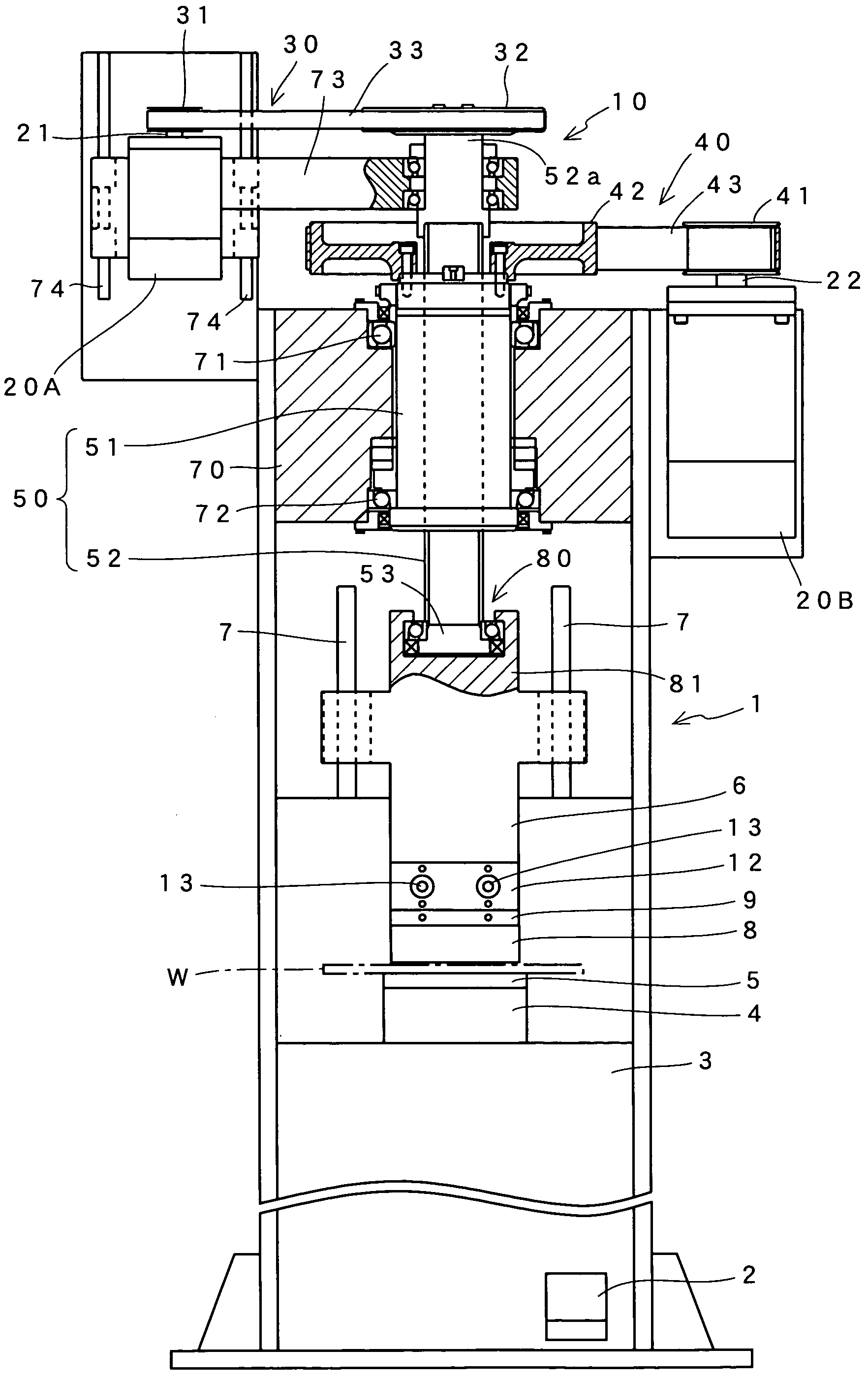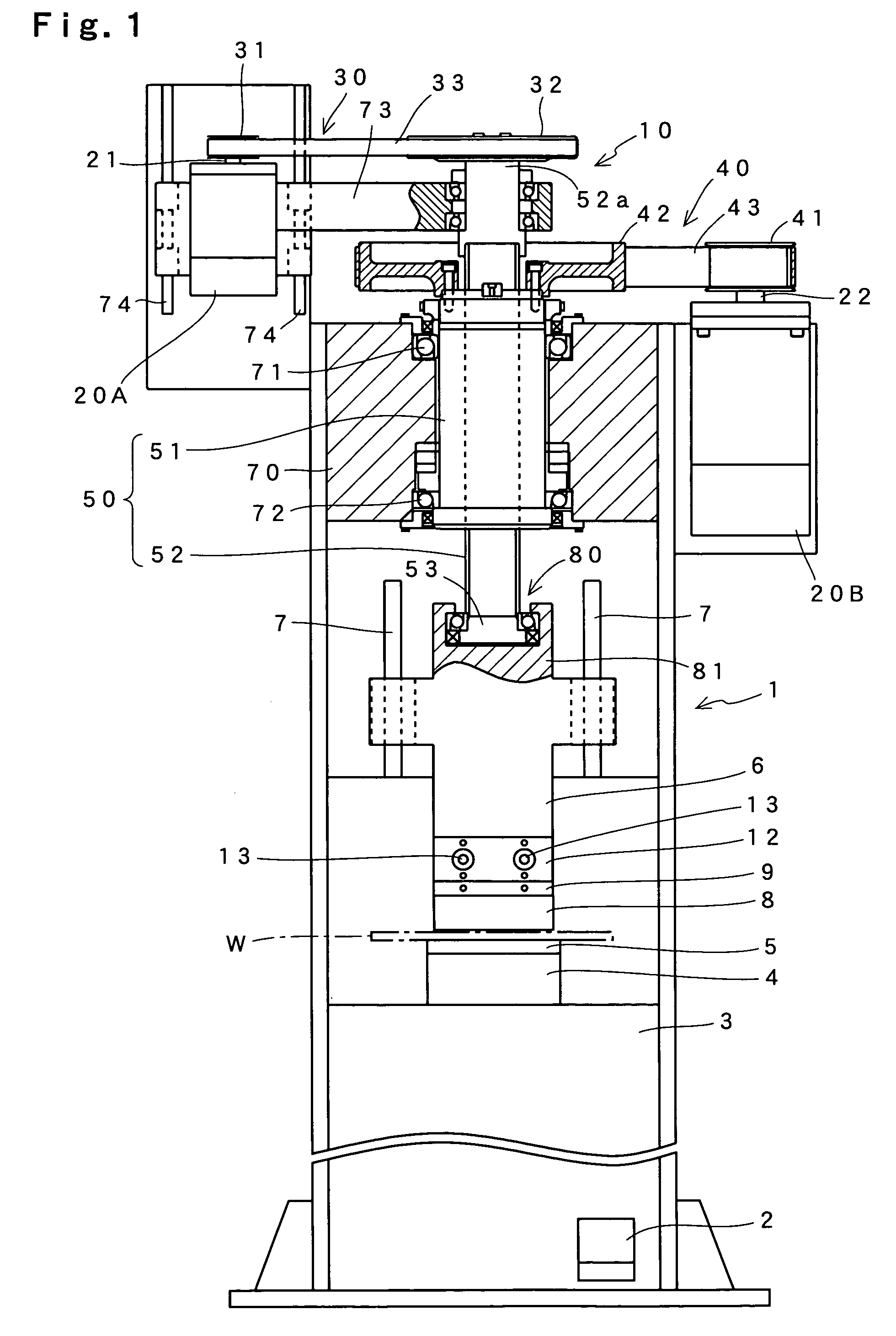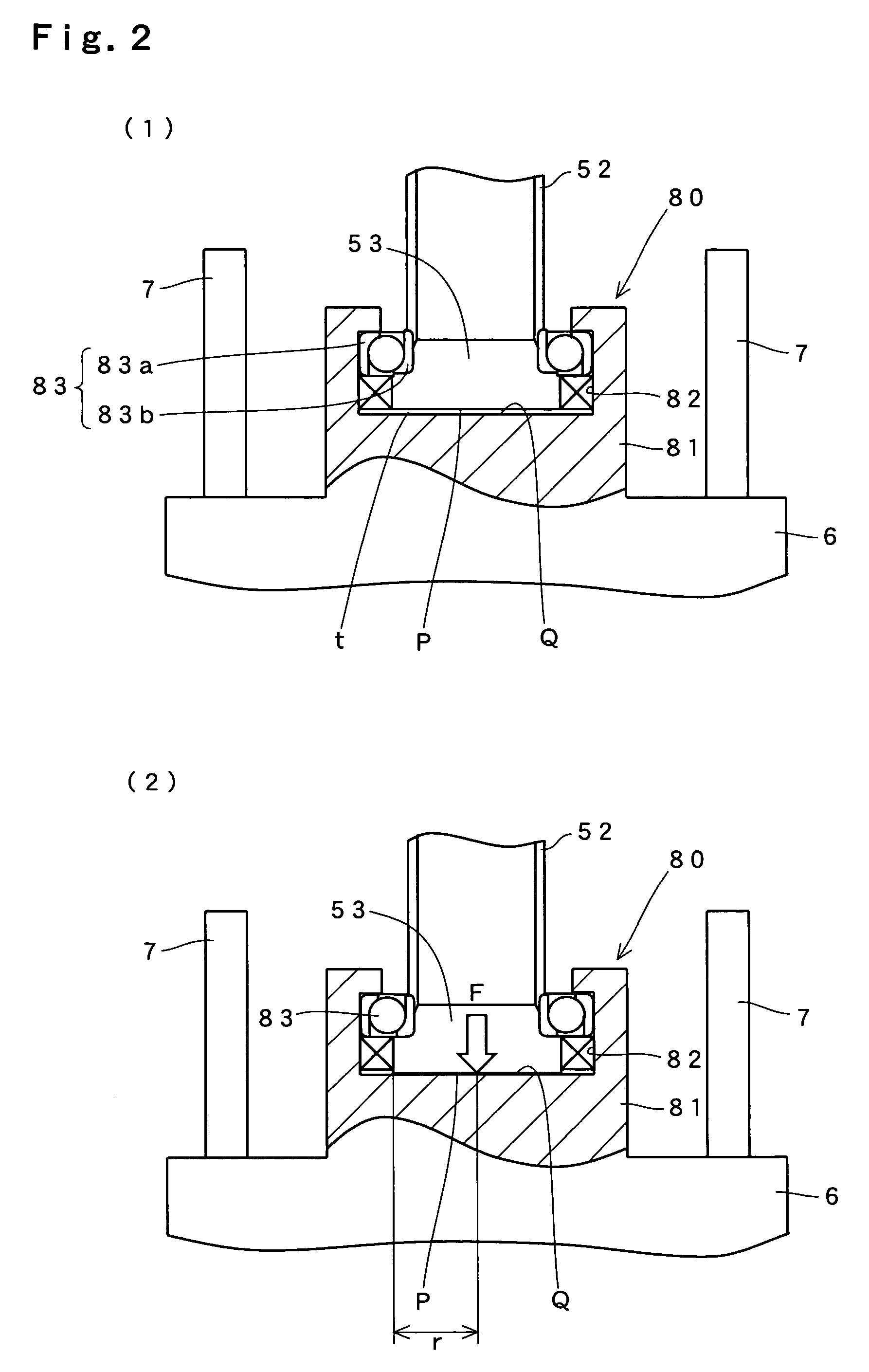Reciprocating drive mechanism and press using the same
a drive mechanism and reciprocating technology, applied in forging presses, forging/pressing/hammering apparatuses, forging presses, etc., can solve the problems of insufficient increase of the moving speed of the ram at return time and approach time, short maximum pressing torque tp, and complicated mechanisms, etc., to achieve sufficient maximum pressing torque, simple configuration, and small parts count
- Summary
- Abstract
- Description
- Claims
- Application Information
AI Technical Summary
Benefits of technology
Problems solved by technology
Method used
Image
Examples
Embodiment Construction
[0047]FIG. 1 shows the configuration of a press brake which is an embodiment of this invention. The press brake of the shown example comprises a machine body 1 which is installed on a floor, and an electric control box (not shown) which is provided with an operation unit for key entry, a display unit for data display, and so on. The machine body 1 is one in which a table 4 for supporting a lower die 5 is attached to the top surface of a bed 3. Above this table 4, a ram 6 is arranged so as to be capable of moving up and down along guides 7 on both sides.
[0048]An upper die 8 is attached to the bottom of the ram 6 via an adapter 12 and a holder 9. A plate-like work W supported on the lower die 5 is bent into a predetermined angle under the application of a pressing force from the upper die 8. The adapter 12 is intended to turn right and left eccentric shafts 13 to adjust the tilt of the upper die 8.
[0049]A foot switch 2 is arranged in the lower part of the bed 3. When an operator steps...
PUM
| Property | Measurement | Unit |
|---|---|---|
| speed | aaaaa | aaaaa |
| torque | aaaaa | aaaaa |
| friction surface | aaaaa | aaaaa |
Abstract
Description
Claims
Application Information
 Login to View More
Login to View More - R&D
- Intellectual Property
- Life Sciences
- Materials
- Tech Scout
- Unparalleled Data Quality
- Higher Quality Content
- 60% Fewer Hallucinations
Browse by: Latest US Patents, China's latest patents, Technical Efficacy Thesaurus, Application Domain, Technology Topic, Popular Technical Reports.
© 2025 PatSnap. All rights reserved.Legal|Privacy policy|Modern Slavery Act Transparency Statement|Sitemap|About US| Contact US: help@patsnap.com



